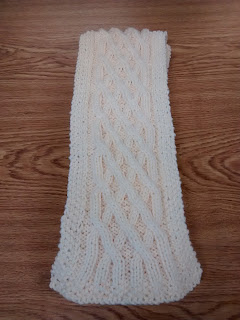I had forgotten how quickly hats knit up. It took less than three days to finish this hat once my last scarf was done.
This hat was knit using Portuguese purling. The idea behind that style is to run the working yarn around the head and hold tension in the right hand while purling by flicking the yarn over the needle with the left thumb. The piece is worked inside out, so purling the entire piece ends up with a knit hat.
The pattern wasn't free so I won't re-post it here. The orange yarn was some leftover Vanna White from my stash and the black yarn came from the Carron One Pound monstrosity.
It worked out pretty well except for the crown. Patterns shouldn't tell you to place more stitch markers halfway through so I half-assed the crown. It's all bound off and that's the best that can be said for it. I definitely didn't have the yarn to do it 'right'.
When I do this pattern again I'll use another pattern for shaping the crown.




